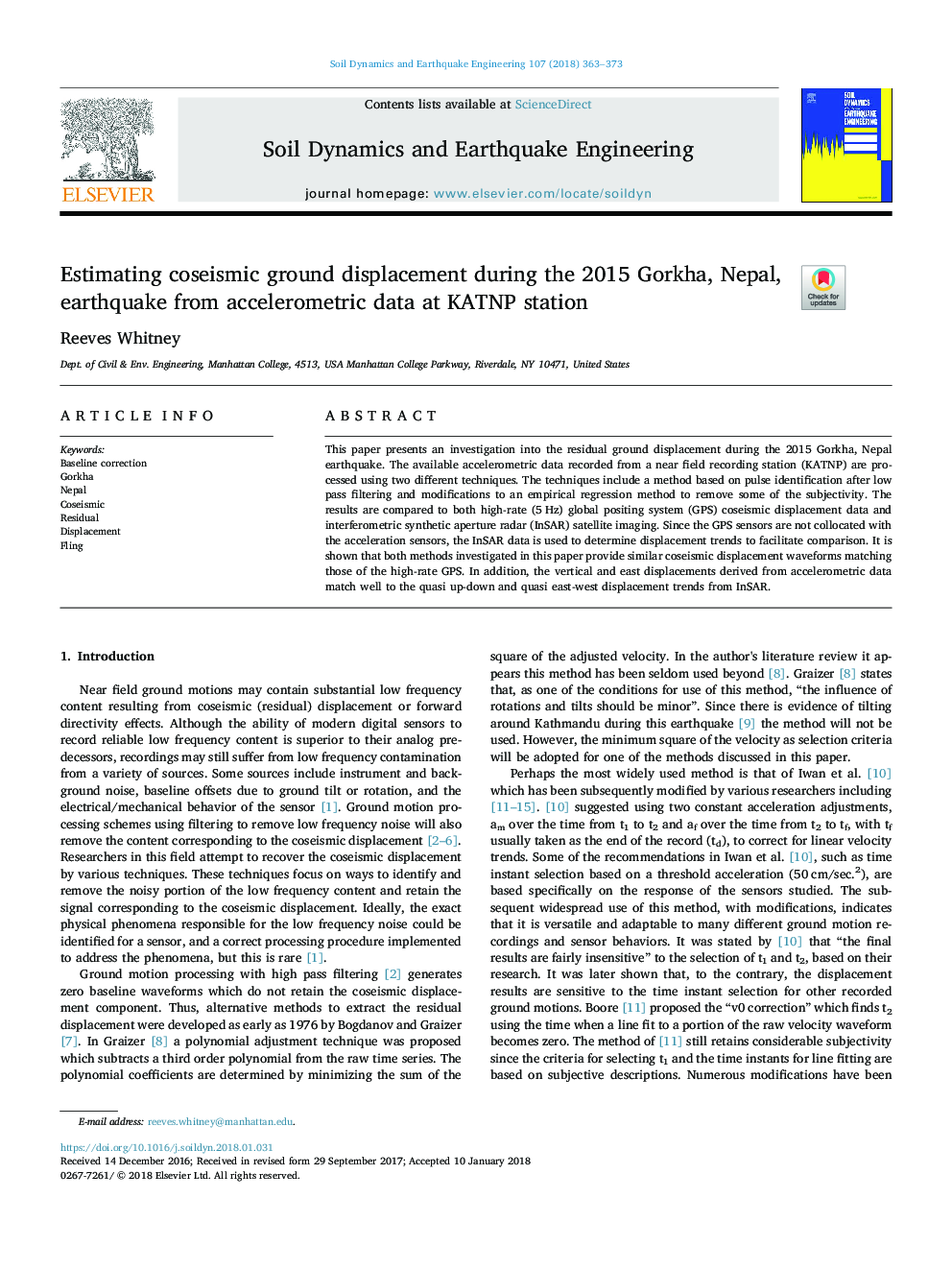| Article ID | Journal | Published Year | Pages | File Type |
|---|---|---|---|---|
| 6770806 | Soil Dynamics and Earthquake Engineering | 2018 | 11 Pages |
Abstract
This paper presents an investigation into the residual ground displacement during the 2015 Gorkha, Nepal earthquake. The available accelerometric data recorded from a near field recording station (KATNP) are processed using two different techniques. The techniques include a method based on pulse identification after low pass filtering and modifications to an empirical regression method to remove some of the subjectivity. The results are compared to both high-rate (5Â Hz) global positing system (GPS) coseismic displacement data and interferometric synthetic aperture radar (InSAR) satellite imaging. Since the GPS sensors are not collocated with the acceleration sensors, the InSAR data is used to determine displacement trends to facilitate comparison. It is shown that both methods investigated in this paper provide similar coseismic displacement waveforms matching those of the high-rate GPS. In addition, the vertical and east displacements derived from accelerometric data match well to the quasi up-down and quasi east-west displacement trends from InSAR.
Related Topics
Physical Sciences and Engineering
Earth and Planetary Sciences
Geotechnical Engineering and Engineering Geology
Authors
Reeves Whitney,
